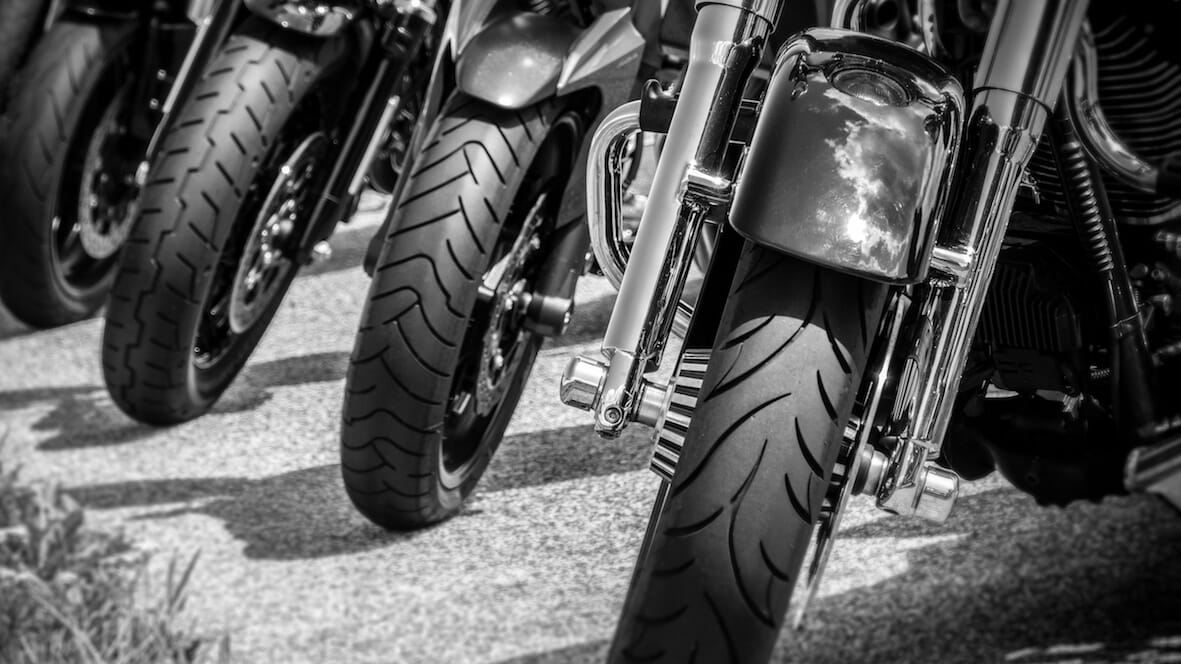Motorcycle Flywheels – Everything You Need to Know

Flywheels are mechanical devices that help store energy and are commonplace in a whole host of applications, including motorcycles and vehicles.
In this article, we delve into everything motorcycle owners need to know about flywheels and how to ensure their bikes are optimised for the highest performance.
If you need help with anything related to your motorcycles controls, cables & hydraulics, do not hesitate to get in touch with our expert team here at Venhill.
What is a Flywheel?
In its simplest function, a flywheel is used as a store of energy, helping to provide a continuous source of power, when power may not be continuous.
A flywheel is a heavy wheel and takes a lot of force to spin. It also takes a lot of force to stop, so it tends to keep spinning, helping to maintain a lot of the momentum built up and preventing lots of wasted energy from constant stopping and starting.
When you think of a typical motorcycle journey around town, there is likely to be plenty of stopping and starting as you navigate through traffic. Without a flywheel, the journey can become deeply inefficient as the energy used to get moving is lost as soon as you stop. However, the flywheel helps combat this during any periods when you stop and maximises any momentum to leverage this energy when you start moving again.
The end result of flywheels for motorcyclists is a smoother ride that can cope with varying speeds and a more energy efficient process.
Motorcycle Flywheels
Traditional flywheels used in the Industrial Revolution were very large, and very heavy. The practicality of putting this type of wheel on a motorcycle would certainly lead to some difficulty riding! So, flywheels have been adapted for specific purposes, including motorcycles. These flywheels offer exactly the same functionality but are adapted to fit within the mechanics of a bike.
Clutches and gears on a motorcycle help improve the performance of the engine. They help give the rider more control over the speed, even if the engine is going at the same speed. However, neither the clutch nor gears can help solve the problem of wasted energy, which is why the flywheel is another key element of a motorcycle.
Replacing the Flywheel
Like any mechanical device, flywheels may be susceptible to damage and need to be replaced.
If you are experiencing any difficulty riding your bike, particularly related to the running of the engine and the ability to use the clutch and gears, the flywheel may well need to be inspected. Any sudden notice of a juddering start and a riding experience which is not as smooth as normal, particularly at slower speeds, are potential signs the flywheel needs changing.
For safety, ensure you get a professional to offer any recommendations and make sure your bike is fit to ride.
In many instances, the flywheel may be replaced when the clutch is replaced. Often when the clutch is worn, it may have damaged or affected the flywheel. At the very least, if replacing the clutch, it is worth inspecting the flywheel to ensure it has not been damaged.
You may also need to simply remove the flywheel to inspect other areas of the bike in certain instances.
Luckily, flywheel pullers make removing and replacing flywheels a simple job that you can do from home.
Flywheel Pullers
Flywheel pullers are the perfect tool to make removing and replacing flywheels a quick and easy job.
As well as the puller, you will also want tools such as a socket to remove the flywheel nut and a holder to hold the flywheel in place as you remove the nut (to keep it secure).
Depending on the engine and motorcycle model, the process for removing the flywheel may vary. Make sure to check with your manuals to ensure you follow all the recommendations for your specific bike.
In general, you’ll start by removing the flywheel nut. This holds the flywheel securely in place. Once the nut is removed, you’ll need your flywheel puller. Attach the flywheel puller to the flywheel. You can then attach a spanner to the puller to lock it in place and use the socket to begin the removal process. The flywheel should then simply pop loose.
Venhill Flywheel Pullers
Here at Venhill, we are focused on helping you get the most out of your motorcycle. We have a wide selection of flywheel pullers to help make the process of changing and replacing a flywheel as easy as possible.
Our pullers even come in a range for both left handers and right handers, making all the difference when you’re trying to use it. There are also varying pullers to suit different models and makes. Your motorcycle manual should mention what size/type of puller is recommended. If you have any doubts or questions, simply send us a message and our team can ensure you get the most suitable puller for your bike.
We also have a rotor and flywheel puller driver set, a ten-piece set to serve fifteen different thread applications, housed in a secure strong moulded case.
As well as our range of pullers, we also have a wide selection of general tools and tool kits, useful for any motorcyclist. Our cables and components section of our website, as well as the tools section include a whole host of useful equipment for your bike. And for those who want to really improve their bike performance, our braided brake lines and hose fittings are second to none and come in a range of specifications and colours.
Browse our online shop today or get in touch with us and we’d be happy to help in any way we can.


